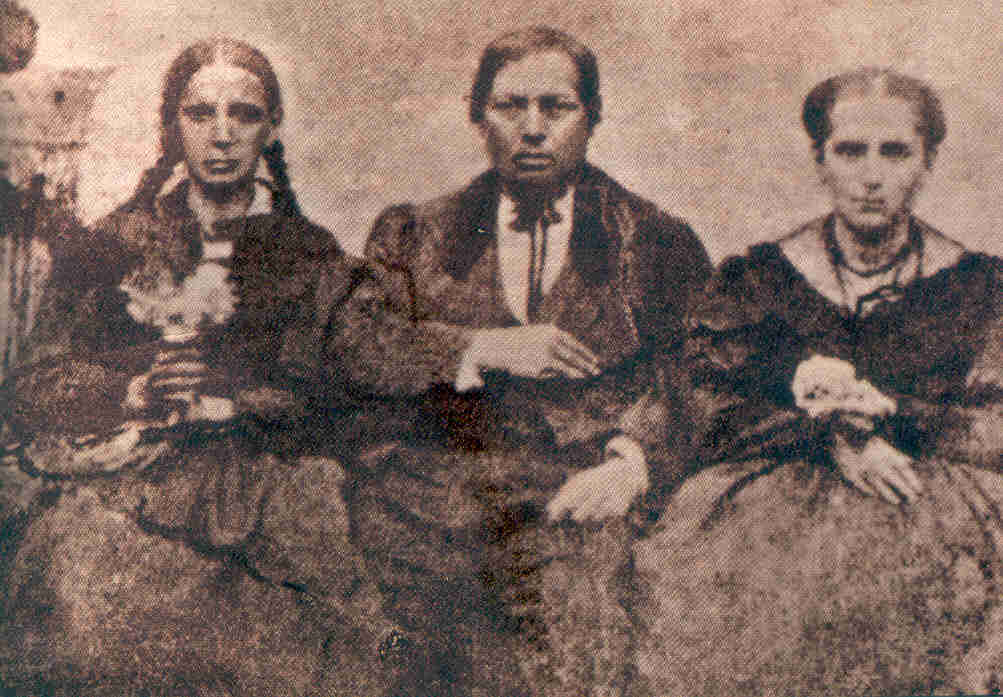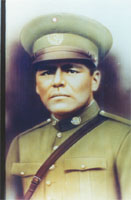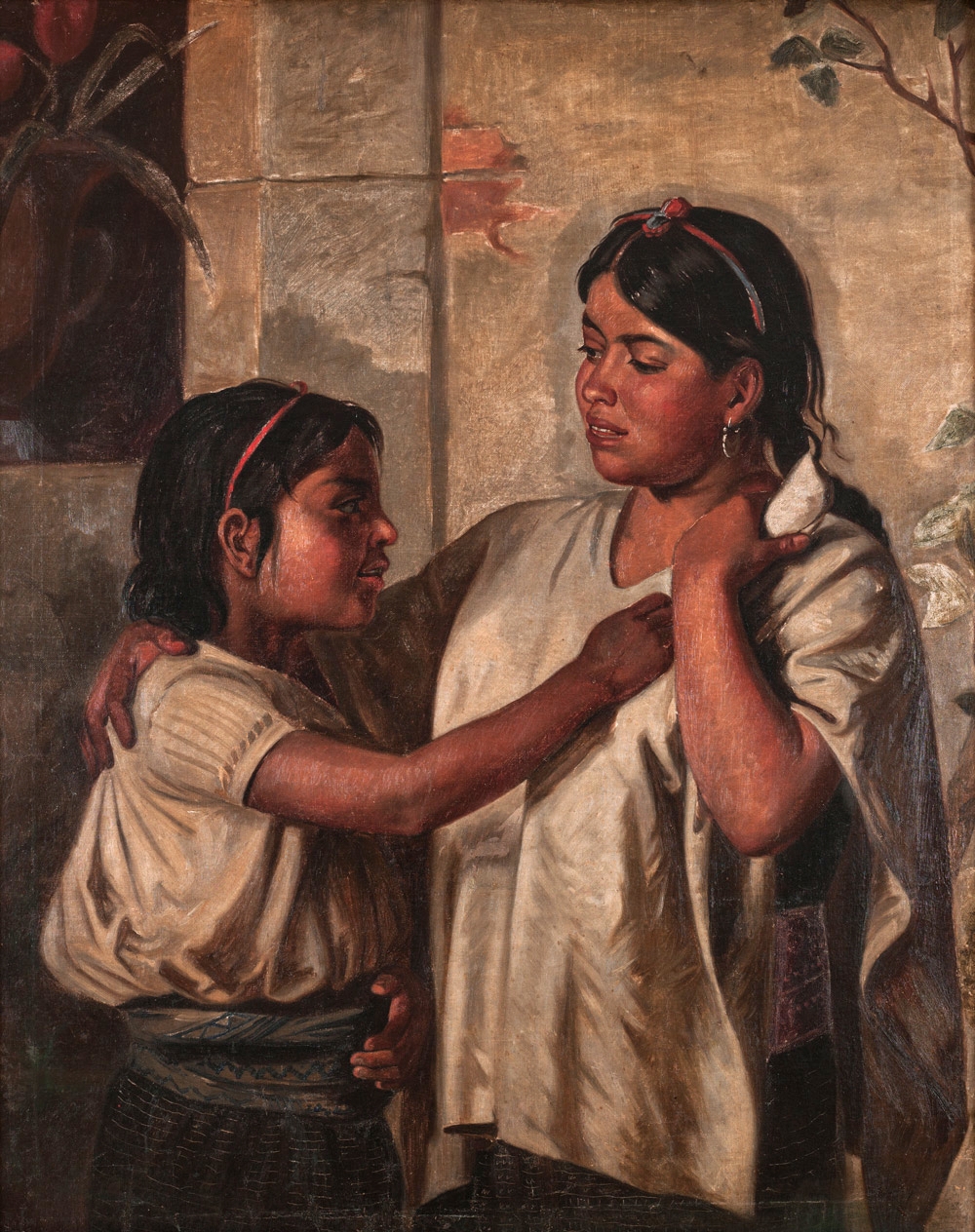|
San Pablo Guelatao
San Pablo Guelatao is a town and the seat of the Municipality of Guelatao de Juárez, in the Mexican state of Oaxaca. It is part of the Ixtlán District in the Sierra Norte de Oaxaca region. Guelatao, as it is often called, is in the foothills of the Sierra de Juárez, a mountain range in the Sierra Madre de Oaxaca System. It is about 55 km north of the city of Oaxaca The town Guelatao is the birthplace of President Benito Juárez, whose parents were Zapotec peasants. He was the first indigenous president of Mexico. When he was born, Guelatao had a population of fewer than 100 people, and fell under the jurisdiction of the larger neighbouring town of Ixtlán. Juárez was baptised in the parish church at Ixtlán, which is now known as Ixtlán de Juárez in his honour. Guelatao became an independent municipality in 1824, after Mexico gained independence from Spain. The town has a small museum dedicated to Juárez. XEGLO, a government-run indigenous community radio statio ... [...More Info...] [...Related Items...] OR: [Wikipedia] [Google] [Baidu] |
Municipalities Of Mexico
Municipalities ('' municipios'' in Spanish) are the second-level administrative divisions of Mexico, where the first-level administrative division is the ''state'' (Spanish: estado). They should not be confused with cities or towns that may share the same name as they are distinct entities and do not share geographical boundaries. As of January 2021, there are 2,454 municipalities in Mexico, excluding the 16 boroughs of Mexico City. Since the 2015 Intercensal Survey, two municipalities have been created in Campeche, three in Chiapas, three in Morelos, one in Quintana Roo and one in Baja California. The internal political organization and their responsibilities are outlined in the 115th article of the 1917 Constitution and detailed in the constitutions of the states to which they belong. are distinct from , a form of Mexican locality, and are divided into '' colonias'' (neighborhoods); some municipalities can be as large as full states, while cities can be measured in b ... [...More Info...] [...Related Items...] OR: [Wikipedia] [Google] [Baidu] |
Benito Juárez
Benito Pablo Juárez García (; 21 March 1806 – 18 July 1872) was a Mexican liberal politician and lawyer who served as the 26th president of Mexico from 1858 until his death in office in 1872. As a Zapotec, he was the first indigenous president of Mexico and the first indigenous head of state in the postcolonial Americas. Born in Oaxaca to a poor rural family and orphaned as a child, Juárez was looked after by his uncle and eventually moved to Oaxaca City at the age of 12, working as a domestic servant. Aided by a lay Franciscan, he enrolled in a seminary and studied law at the Institute of Sciences and Arts, where he became active in liberal politics. After his appointment as a judge, he married Margarita Maza, a woman of European ancestry from a socially distinguished family in Oaxaca City, and rose to national prominence after the ouster of Antonio López de Santa Anna in the Plan of Ayutla. He participated in La Reforma, a series of liberal measures under the pre ... [...More Info...] [...Related Items...] OR: [Wikipedia] [Google] [Baidu] |
Zapotec Peoples
The Zapotecs ( Valley Zapotec: ''Bën za'') are an indigenous people of Mexico. The population is concentrated in the southern state of Oaxaca, but Zapotec communities also exist in neighboring states. The present-day population is estimated at approximately 400,000 to 650,000 persons, many of whom are monolingual in one of the native Zapotec languages and dialects. In pre-Columbian times, the Zapotec civilization was one of the highly developed cultures of Mesoamerica, which, among other things, included a system of writing. Many people of Zapotec ancestry have emigrated to the United States over several decades, and they maintain their own social organizations in the Los Angeles and Central Valley areas of California. There are four basic groups of Zapotecs: the ', who live in the southern Isthmus of Tehuantepec, the ', who live in the northern mountains of the Sierra Madre de Oaxaca, the southern Zapotecs, who live in the southern mountains of the Sierra Sur, and the Centr ... [...More Info...] [...Related Items...] OR: [Wikipedia] [Google] [Baidu] |
Indigenous Peoples Of Mexico
Indigenous peoples of Mexico ( es, gente indígena de México, pueblos indígenas de México), Native Mexicans ( es, nativos mexicanos) or Mexican Native Americans ( es, pueblos originarios de México, lit=Original peoples of Mexico), are those who are part of communities that trace their roots back to populations and communities that existed in what is now Mexico before the arrival of the Spanish. The number of indigenous Mexicans is defined through the second article of the Mexican Constitution. The Mexican census does not classify individuals by race, using the cultural-ethnicity of indigenous communities that preserve their indigenous languages, traditions, beliefs, and cultures. According to the National Indigenous Institute (INI) and the National Institute of Indigenous Peoples (CDI), in 2012 the indigenous population was approximately 15 million people, divided into 68 ethnic groups. The 2020 Censo General de Población y Vivienda reported 11.8 million people living in ... [...More Info...] [...Related Items...] OR: [Wikipedia] [Google] [Baidu] |
Chinantec
The Chinantec or Chinantecan languages constitute a branch of the Oto-Manguean family. Though traditionally considered a single language, '' Ethnologue'' lists 14 partially mutually unintelligible varieties of Chinantec.Palancar, Enrique L. (2014). Revisiting the Complexity of the Chinantecan Verb Conjugation Classes. In Jean-Léo Léonard & Alain Kihm (Eds.), ''Patterns in Mesoamerican Morphology'' (pp. 77–102). HAL 01100738 The languages are spoken by the indigenous Chinantec people who live in Oaxaca and Veracruz, Mexico, especially in the districts of Cuicatlán, Ixtlán de Juárez, Tuxtepec and Choapan, and in Staten Island, New York. Internal classification Egland and Bartholomew (1978) established fourteen Chinantec languages on the basis of 80% mutual intelligibility. '' Ethnologue'' found that one that had not been adequately compared (Tlaltepusco) was not distinct, but split another (Lalana from Tepinapa). At a looser criterion of 70% intelligibility, Lalana–Tepin ... [...More Info...] [...Related Items...] OR: [Wikipedia] [Google] [Baidu] |
Mixe Languages
The Mixe languages are languages of the Mixean branch of the Mixe–Zoquean language family indigenous to southern Mexico. According to a 1995 classification, there are seven of them (including one that is extinct). The four that are spoken in Oaxaca are commonly called Mixe while their two relatives spoken in Veracruz are commonly called " Popoluca", but sometimes also Mixe (these are " Oluta Popoluca" or "Olutec Mixe" and " Sayula Popoluca" or "Sayultec Mixe"). This article is about the Oaxaca Mixe languages, which their speakers call ''Ayöök'', ''Ayuujk'', ''Ayüük'' or ''Ayuhk''. 140,000 people reported their language to be "Mixe" in the 2020 census. Classification Oaxaca Mixe languages are spoken in the Sierra Mixe of eastern Oaxaca. These four languages are: North Highland Mixe, spoken around Totontepec (the most divergent); South Highland Mixe, spoken around Santa María Tlahuitoltepec, Ayutla and Tamazulapan); Midland Mixe, spoken around Juquila and Zacatepe ... [...More Info...] [...Related Items...] OR: [Wikipedia] [Google] [Baidu] |
Zapotec Language
The Zapotec languages are a group of around 50 closely related indigenous Mesoamerican languages that constitute a main branch of the Oto-Manguean language family and which is spoken by the Zapotec people from the southwestern-central highlands of Mexico. A 2020 census reports nearly half a million speakers, with the majority inhabiting the state of Oaxaca. Zapotec-speaking communities are also found in the neighboring states of Puebla, Veracruz, and Guerrero. Labor migration has also brought a number of native Zapotec speakers to the United States, particularly in California and New Jersey. Most Zapotec-speaking communities are highly bilingual in Spanish. Name The name of the language in Zapotec itself varies according to the geographical variant. In Juchitán (Isthmus) it is ''Diidxazá'' , in Mitla it is ''Didxsaj'' , in Zoogocho it is ''Diža'xon'' , in Coatec Zapotec it is ''Di'zhke , in Miahuatec Zapotec it is ''Dí'zdéh'' and in Santa Catarina Quioquitani it is ''T ... [...More Info...] [...Related Items...] OR: [Wikipedia] [Google] [Baidu] |
Community Radio
Community radio is a radio service offering a third model of radio broadcasting in addition to commercial and public broadcasting. Community stations serve geographic communities and communities of interest. They broadcast content that is popular and relevant to a local, specific audience but is often overlooked by commercial (or) mass-media broadcasters. Community radio stations are operated, owned, and influenced by the communities they serve. They are generally nonprofit and provide a mechanism for enabling individuals, groups, and communities to tell their own stories, to share experiences and, in a media-rich world, to become creators and contributors of media. In many parts of the world, community radio acts as a vehicle for the community and voluntary sector, civil society, agencies, NGOs and citizens to work in partnership to further community development aims, in addition to broadcasting. There is legally defined community radio (as a distinct broadcasting sector) i ... [...More Info...] [...Related Items...] OR: [Wikipedia] [Google] [Baidu] |
XEGLO
XEGLO-AM/XHGJO-FM (''La Voz de la Sierra Juárez'' – "The Voice of the Sierra Juárez") is an indigenous community radio station that broadcasts in Zapotec, Mixe and Chinantec from Guelatao de Juárez in the Mexican state of Oaxaca. It is run by the Cultural Indigenist Broadcasting System (SRCI) of the National Commission for the Development of Indigenous Peoples The National Institute of Indigenous Peoples ( es, Instituto Nacional de los Pueblos Indígenas, INPI) is a decentralized agency of the Mexican Federal Public Administration. It was established on December 4, 2018, though the earliest Mexican ... (CDI). History On 21 March 1990, test transmissions began for XEGLO, at half power and only operating during the late morning and early afternoon. The station began full service on 17 November. XHGJO-FM was awarded to the CDI in 2017. External linksXEGLO website* References Indigenous peoples of Oaxaca Chinantec-language radio stations Sistema de Radiodi ... [...More Info...] [...Related Items...] OR: [Wikipedia] [Google] [Baidu] |
Ixtlán De Juárez
Ixtlán de Juárez is a town and municipality in the Mexican state of Oaxaca about 65 km north of the city of Oaxaca on Federal Highway 175 towards Veracruz. It is part of the Ixtlán District in the Sierra Norte de Oaxaca region. Administrative areas Municipality of Ixtlán The municipality of Ixtlán de Juárez includes the town, and in addition the settlements of San Juan Yagila, Santa Cruz Yagavila, Santa María Yahuiche, Santa María Zoogochi, Santiago Teotlasco, Santo Domingo Cacalotepec, San Gaspar Yagalaxi, San Miguel Tiltepec, Santa María Josaa, La Luz, La Josefina and La Palma. (in Spanish) The population of the town in the 2005 census was 2,479, and of the entire municipality, 7,188. Other than the town of Ixtlán, none of the settlements have as many as a thousand inhabitants. Rincón de Ixtlán The Rincón de Ixtlán is an area largely within the municipality of Ixtlán de Juárez. It comprises nine communities, eight of them within the municipality of ... [...More Info...] [...Related Items...] OR: [Wikipedia] [Google] [Baidu] |
President Of Mexico
The president of Mexico ( es, link=no, Presidente de México), officially the president of the United Mexican States ( es, link=no, Presidente de los Estados Unidos Mexicanos), is the head of state and head of government of Mexico. Under the Constitution of Mexico, the president heads the executive branch of the federal government and is the commander-in-chief of the Mexican Armed Forces. The current president is Andrés Manuel López Obrador, who took office on 1 December 2018. The office of the president is considered to be revolutionary, in the sense that the powers of office are derived from the Revolutionary Constitution of 1917. Another legacy of the Mexican Revolution is the Constitution's ban on re-election. Mexican presidents are limited to a single six-year term, called a '' sexenio''. No one who has held the post, even on a caretaker basis, is allowed to run or serve again. The constitution and the office of the president closely follow the presidential system of ... [...More Info...] [...Related Items...] OR: [Wikipedia] [Google] [Baidu] |
Administrative Divisions Of Mexico
The United Mexican States ( es, Estados Unidos Mexicanos) is a federal republic composed of 32 federal entities: 31 states and Mexico City, an autonomous entity. According to the Constitution of 1917, the states of the federation are free and sovereign in all matters concerning their internal affairs. Each state has its own congress and constitution. Federal entities of Mexico States Roles and powers of the states The states of the Mexican Federation are free, sovereign, autonomous and independent of each other. They are free to govern themselves according to their own laws; each state has a constitution that cannot contradict the federal constitution, which covers issues of national competence. The states cannot make alliances with other states or any independent nation without the consent of the whole federation, except those related to defense and security arrangements necessary to keep the border states secure in the event of an invasion. The political organiza ... [...More Info...] [...Related Items...] OR: [Wikipedia] [Google] [Baidu] |



